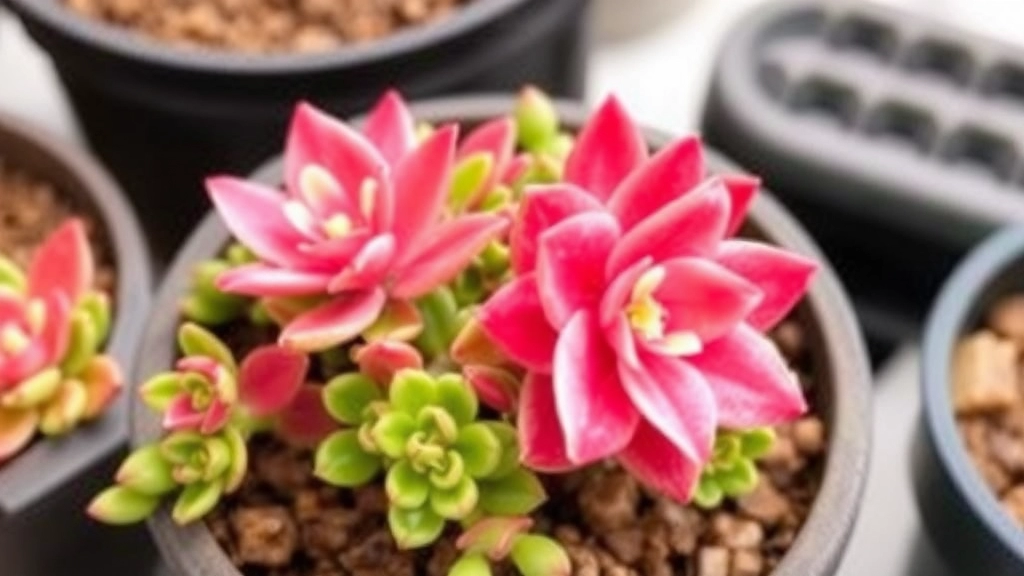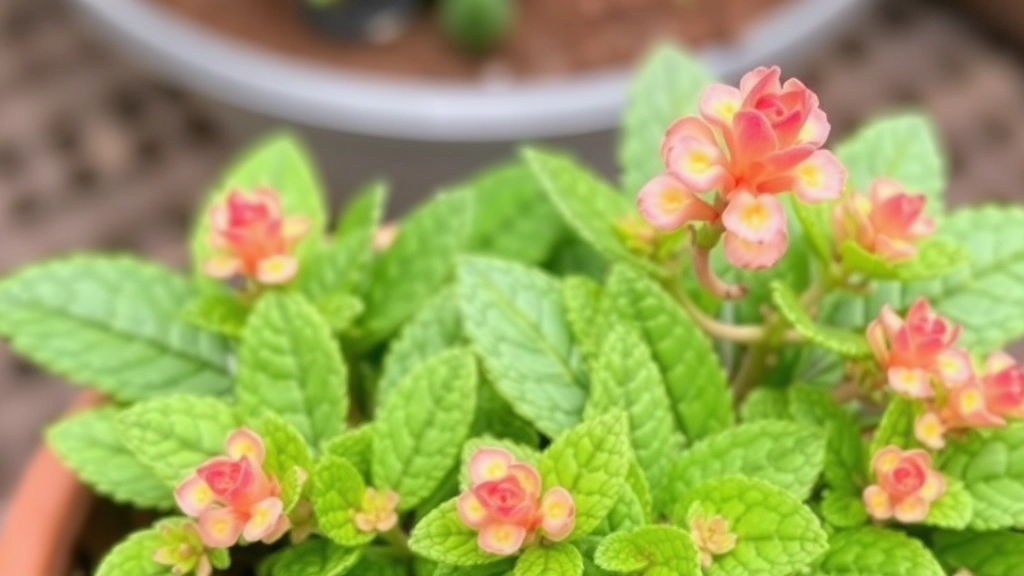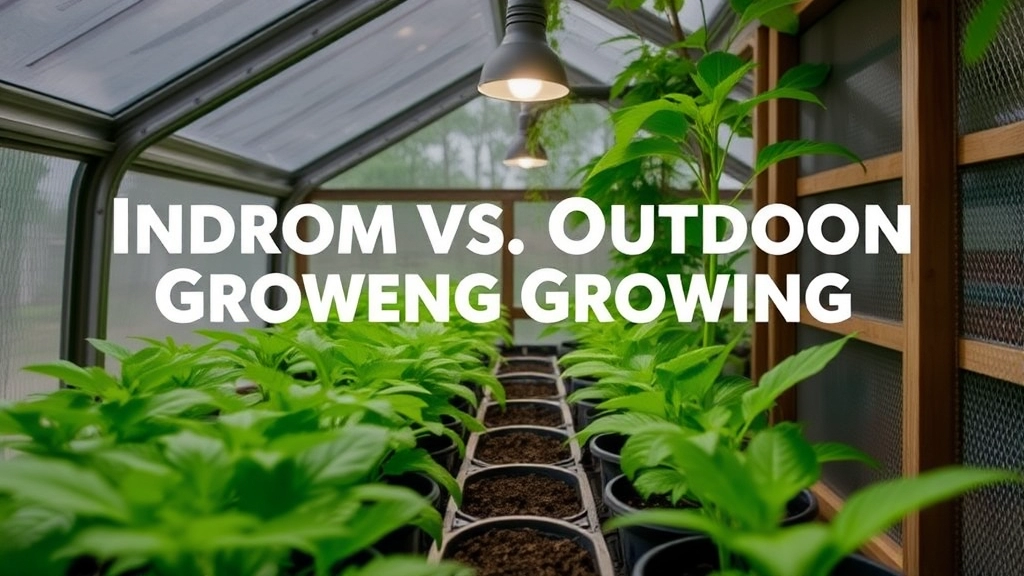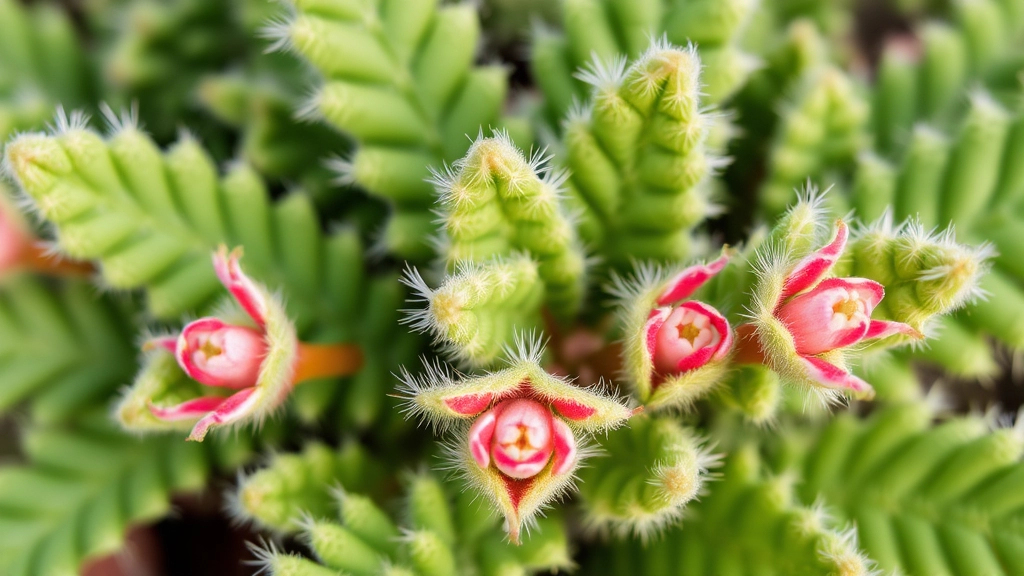Growing Kalanchoe Tomentosa Hairy
When it comes to growing Kalanchoe Tomentosa Hairy, also known as the Panda Plant, understanding its unique needs is key. This succulent is famous for its soft, fuzzy leaves that give it a distinctive look. Whether you’re a seasoned gardener or a newbie, providing the right light, temperature, and soil conditions will ensure your Kalanchoe Tomentosa thrives.
Propagation is another exciting aspect of caring for Kalanchoe Tomentosa Hairy. With simple techniques, you can easily multiply your collection. Additionally, being aware of common pests and diseases, and knowing how to manage them, will help keep your plant healthy. Let’s dive into the essentials for growing this charming succulent indoors or outdoors.
### Ideal Growing Conditions for Kalanchoe Tomentosa
Are you struggling to keep your Kalanchoe Tomentosa thriving?
Understanding the ideal growing conditions is crucial for nurturing this beautiful succulent.
Kalanchoe Tomentosa, commonly known as the Panda Plant, thrives best in specific environments that mimic its native habitat.
#### Optimal Environment
– **Light**: This plant loves bright, indirect sunlight.
– **Temperature**: Ideally, it prefers temperatures between 18°C to 24°C.
– **Humidity**: Low humidity levels are best, as it is a drought-resistant plant.
#### Key Factors to Consider
1. **Location**: Position your Panda Plant near a south or west-facing window for optimal light.
2. **Seasonal Changes**: During winter, ensure it still receives adequate light, as days are shorter.
3. **Air Circulation**: Good airflow prevents fungal diseases and keeps the plant healthy.
For more detailed information on how to care for your Panda Plant, you can refer to our [complete care guide for Kalanchoe Tomentosa](https://planthq.org/how-to-care-for-kalanchoe-tomentosa-complete-guide/). Additionally, if you’re interested in propagation methods, check out our [step-by-step propagation guide](https://planthq.org/kalanchoe-tomentosa-propagation-guide-stepbystep-tips/).
Light and Temperature Requirements

So, you’ve got your Kalanchoe Tomentosa, and you’re wondering how to keep it thriving.
One of the biggest concerns for any plant parent is getting the right light and temperature.
Light Needs
Kalanchoe Tomentosa, often known as “Panda Plant,” absolutely loves bright, indirect sunlight.
- Ideal Spot: Place it near a south or west-facing window.
- Direct Sunlight: A little is okay, but too much can scorch those lovely leaves.
- Signs of Trouble: If the leaves start stretching or losing their vibrant colour, it’s a cry for more light.
Temperature Preferences
Now, let’s talk about temperature.
Kalanchoe Tomentosa is a bit of a diva when it comes to warmth.
- Ideal Range: Aim for 20°C to 25°C during the day.
- Nighttime Chill: It can tolerate cooler nights, down to about 10°C, but anything below that can stress it out.
- Avoid Drafts: Keep it away from cold drafts or sudden temperature changes.
When it comes to ensuring your Kalanchoe Tomentosa thrives, understanding the right soil and watering techniques is essential. Many plant enthusiasts worry about overwatering or using the wrong soil type, which can lead to root rot or stunted growth. Let’s break down the best practices for soil and watering to keep your succulent in tip-top shape.
Kalanchoe Tomentosa prefers well-draining soil to thrive. Here are some key points to consider:
– **Cactus Mix**: A commercial cactus or succulent mix works wonders.
– **DIY Mix**: If you prefer to create your own, combine potting soil with sand and perlite in equal parts. This ensures excellent drainage.
– **pH Level**: Aim for a slightly acidic to neutral pH, around 6.0 to 7.0.
Finding the right balance for watering is crucial. Here’s how to do it effectively:
– **Frequency**: Water only when the top inch of soil feels dry. This could be every 2-3 weeks, depending on your environment.
– **Method**: Water deeply until you see it draining from the bottom of the pot. This encourages strong root growth.
– **Seasonal Adjustments**: Reduce watering in winter when the plant goes dormant.
Keep an eye out for these indicators that you might be overdoing it:
– Yellowing leaves
– Soft, mushy stems
– Foul odour from the soil
By following these soil and watering tips, you can create a nurturing environment for your Kalanchoe Tomentosa. For more detailed guidance, check out our [complete guide to Kalanchoe Tomentosa care](https://planthq.org/how-to-care-for-kalanchoe-tomentosa-complete-guide/) and learn about the [different varieties and care tips](https://planthq.org/types-of-kalanchoe-tomentosa-varieties-and-care-tips/).
Propagation Techniques for Kalanchoe Tomentosa

As we delve into the propagation techniques for Kalanchoe Tomentosa, it’s essential to understand how to expand your collection effectively. Propagation can be a rewarding experience, allowing you to share your love for this charming succulent with friends or simply enhance your indoor garden.
Methods of Propagation
- Leaf Cuttings
- Choose Healthy Leaves: Select mature, healthy leaves from the parent plant.
- Cut and Dry: Use a sharp, clean knife to cut the leaves. Allow them to dry for a few days until the cut end calluses.
- Planting: Place the dried leaves on top of well-draining soil and mist lightly. Roots will develop over time.
- Offsets
- Locate Offsets: Kalanchoe Tomentosa often produces offsets or “pups” at its base.
- Gently Remove: Carefully separate the offsets from the main plant using a clean knife.
- Replant: Plant the offsets in their own pots with suitable soil, ensuring they are well-drained.
- Stem Cuttings
- Select a Healthy Stem: Choose a healthy stem that is at least 4-6 inches long.
- Cut and Callus: Cut the stem and allow it to dry until the cut end forms a callus.
- Planting: Insert the callused end into the soil, ensuring it is stable and upright.
Care After Propagation
- Watering: After planting, water lightly. Avoid overwatering to prevent rot.
- Light: Place in a bright, indirect light location to encourage growth.
- Patience: Root development can take a few weeks, so patience is key.
Common Pests and How to Manage Them
As we delve deeper into the care of Kalanchoe Tomentosa, it’s essential to address a common concern for many plant enthusiasts: pests. These little intruders can quickly turn a thriving plant into a struggling one if not managed properly.
Identifying Common Pests
Kalanchoe Tomentosa is relatively resilient, but it can still fall victim to a few pests:
- Mealybugs: These tiny, white, cotton-like insects often hide in leaf joints and can sap the plant’s strength.
- Aphids: Small, green or black insects that cluster on new growth, causing distortion and stunted growth.
- Spider Mites: These tiny pests thrive in dry conditions, leaving fine webbing and yellow spots on leaves.
- Scale Insects: Often mistaken for small bumps on the leaves, they can be hard to spot but will weaken your plant over time.
Management Strategies
To keep your Kalanchoe Tomentosa healthy, here are some effective management strategies:
- Regular Inspection: Check your plant weekly for any signs of pests.
- Natural Remedies: Use a solution of water and mild soap to gently wash off pests. This can be effective against mealybugs and aphids.
- Neem Oil: Applying neem oil can deter pests without harming your plant. It’s a natural pesticide that’s safe for indoor use.
- Isolation: If you spot an infestation, move the affected plant away from others to prevent spreading.
- Introduce Beneficial Insects: Ladybugs and lacewings can help control aphid populations naturally.
By staying vigilant and employing these strategies, you can protect your Kalanchoe Tomentosa from the common pests that threaten its health. For more detailed care tips, check out our complete guide on caring for Kalanchoe Tomentosa. Additionally, if you’re interested in propagation techniques, our step-by-step propagation guide can be very helpful.
Preventing Diseases in Kalanchoe Tomentosa

So, you’ve got your Kalanchoe Tomentosa thriving, but what about those pesky diseases that can sneak up on you?
Here’s the lowdown on keeping your plant healthy and happy:
- Water Wisely
– Overwatering is a common culprit.
– Make sure the soil dries out completely between waterings.
– Water less in winter when the plant is dormant. - Good Air Circulation
– Ensure your plant has room to breathe.
– Avoid crowded spaces that can trap moisture.
– A little airflow can go a long way in preventing fungal diseases. - Watch for Pests
– Keep an eye out for pests like mealybugs and aphids.
– If you spot any, act fast! A simple wipe with a damp cloth or a gentle spray of insecticidal soap can do wonders. - Cleanliness is Key
– Regularly remove dead leaves and debris around your plant.
– This helps prevent the buildup of mold and bacteria. - Use Quality Soil
– Opt for well-draining soil to avoid root rot.
– A cactus mix or a combination of potting soil and sand works best. - Monitor Temperature and Humidity
– Kalanchoe Tomentosa prefers warm, dry conditions.
– Avoid placing it in overly humid environments or near drafts. - Fungicides When Necessary
– If you notice signs of disease, don’t panic!
– A mild fungicide can help, but always follow the instructions.
How to Repot Kalanchoe Tomentosa Safely
Repotting your Kalanchoe Tomentosa can seem daunting, but it’s essential for its health and growth. You might be wondering when the best time to repot is or how to do it without damaging your plant. Let’s break it down into simple steps.
When to Repot
- Signs Your Plant Needs Repotting:
- Roots are growing out of the drainage holes.
- The plant is top-heavy and unstable.
- Soil dries out too quickly.
Steps to Repot Safely
- Choose the Right Time:
- Early spring is ideal as the plant is entering its growing season.
- Select a New Pot:
- Opt for a pot that is one size larger.
- Ensure it has drainage holes to prevent root rot.
- Prepare the Soil:
- Use a well-draining cactus or succulent mix.
- You can also mix regular potting soil with sand or perlite for better drainage.
- Remove the Plant:
- Gently take the plant out of its current pot.
- Use a dull knife to loosen the soil if needed, taking care not to damage the roots.
- Inspect the Roots:
- Check for any signs of rot or damage.
- Trim away any unhealthy roots with clean scissors.
- Place in New Pot:
- Add a layer of fresh soil to the bottom of the new pot.
- Position the plant in the centre and fill in around the sides with more soil.
- Water Sparingly:
- After repotting, wait a week before watering.
- This allows the roots to adjust and reduces the risk of rot.
- Provide Proper Light:
- Keep the repotted plant in a bright, indirect light location for a few days.
Repotting doesn’t have to be a stressful experience. By following these steps, you can help your Kalanchoe Tomentosa thrive in its new home. For more detailed care, check out our complete guide on caring for Kalanchoe Tomentosa. Additionally, if you’re interested in propagation, don’t miss our step-by-step propagation guide.
Indoor vs. Outdoor Growing: What You Should Know

When it comes to growing Kalanchoe Tomentosa, you might be wondering whether to keep it indoors or let it bask in the great outdoors.
Both options have their perks, but each also comes with its own set of challenges.
Indoor Growing
If you’re leaning towards keeping your Kalanchoe Tomentosa indoors, here’s what to keep in mind:
- Light Requirements: Place it near a bright window where it can soak up plenty of indirect sunlight. Too much direct sun can scorch those lovely leaves!
- Temperature Control: Indoor environments can be more consistent. Aim for temperatures between 20-25°C (68-77°F).
- Humidity Levels: Kalanchoe loves dry air, so avoid overly humid rooms like bathrooms. A well-ventilated space works wonders.
- Space Considerations: Make sure you have enough room for growth. These beauties can get a bit bushy!
Outdoor Growing
Thinking about taking your Kalanchoe outside? Here’s the lowdown:
- Sun Exposure: Outdoor plants thrive in bright, indirect sunlight. A spot with some afternoon shade is ideal to prevent leaf burn.
- Temperature Awareness: Kalanchoe is not a fan of frost. If you live in a cooler climate, you’ll need to bring it inside when temperatures drop below 10°C (50°F).
- Soil Considerations: Use well-draining soil to prevent waterlogging. You want to keep those roots happy!
- Pest Vigilance: Outdoor plants can attract pests. Regular checks will help you catch any unwanted visitors early.
Making the Choice
So, should you go indoor or outdoor?
It really boils down to your personal preferences and your local climate.
If you want more control over conditions, indoors is the way to go.
But if you’ve got a sunny spot in your garden, outdoor growing can be super rewarding.
Whichever route you choose, just remember to keep an eye on light and temperature.
As a plant enthusiast, you may be wondering if Kalanchoe Tomentosa is safe for your furry friends.
### Is Kalanchoe Tomentosa Toxic to Pets?
Yes, Kalanchoe Tomentosa, commonly known as the Panda Plant, is considered toxic to pets, particularly cats and dogs.
### Signs of Toxicity
If your pet ingests any part of this plant, they may exhibit symptoms such as:
– Vomiting
– Diarrhoea
– Lethargy
– Drooling
– Abdominal pain
### What to Do If Your Pet Ingests Kalanchoe Tomentosa
If you suspect your pet has eaten Kalanchoe Tomentosa, it’s essential to act quickly:
1. **Remove the Plant**: Ensure your pet can no longer access the plant.
2. **Contact Your Vet**: Call your veterinarian for advice. They may recommend bringing your pet in for an examination.
3. **Monitor Symptoms**: Keep an eye on your pet for any signs of distress.
### Preventing Accidental Ingestion
To keep your pets safe, consider these tips:
– **Placement**: Keep Kalanchoe Tomentosa out of reach, ideally on high shelves.
– **Alternative Plants**: Research [pet-safe plants](https://planthq.org/care-guide-for-kalanchoe-tomentosa-brown/) if you’re looking to expand your indoor garden.
– **Education**: Educate family members about the potential dangers of toxic plants. For more tips on caring for this plant, check out our [complete guide](https://planthq.org/how-to-care-for-panda-plant-kalanchoe-tomentosa-a-complete-guide/).
Frequently Asked Questions (FAQs) about Kalanchoe Tomentosa
What kind of light does Kalanchoe Tomentosa need?
Kalanchoe Tomentosa thrives in bright, indirect sunlight. Place it near a south or west-facing window for optimal light. A little direct sunlight is fine, but too much can scorch the leaves.
What is the ideal temperature for Kalanchoe Tomentosa?
The ideal daytime temperature range for Kalanchoe Tomentosa is between 20°C to 25°C. It can tolerate cooler nights down to about 10°C, but anything below that can stress the plant.
How can I propagate Kalanchoe Tomentosa?
There are three main methods to propagate Kalanchoe Tomentosa: leaf cuttings, offsets, and stem cuttings. Each method involves selecting healthy parts of the plant, allowing them to callus, and then planting them in well-draining soil.
What should I do to prevent diseases in my Kalanchoe Tomentosa?
To prevent diseases, water wisely by letting the soil dry out completely between waterings, ensure good air circulation, watch for pests, and keep the plant clean. Using quality, well-draining soil and monitoring temperature and humidity also help.
Can Kalanchoe Tomentosa be grown both indoors and outdoors?
Yes, Kalanchoe Tomentosa can be grown both indoors and outdoors. Indoor growing offers more control over light and temperature, while outdoor growing can be rewarding if you have a suitable climate and spot.
What are the signs that my Kalanchoe Tomentosa needs more light?
If the leaves of your Kalanchoe Tomentosa start stretching or losing their vibrant color, it is a sign that the plant needs more light.
How often should I water my Kalanchoe Tomentosa?
Water your Kalanchoe Tomentosa only when the soil has dried out completely. Overwatering is a common cause of root rot. Water less during the winter months when the plant is dormant.
What are common pests that affect Kalanchoe Tomentosa, and how can I deal with them?
Common pests include mealybugs and aphids. If you spot any, act quickly by wiping them off with a damp cloth or using a gentle spray of insecticidal soap.
What type of soil is best for Kalanchoe Tomentosa?
Use well-draining soil to prevent root rot. A cactus mix or a combination of potting soil and sand works best for Kalanchoe Tomentosa.
How should I care for Kalanchoe Tomentosa after propagation?
After propagation, water lightly to avoid rot, place the plant in a bright, indirect light location, and be patient as root development can take a few weeks.
References
-
How to Grow Kalanchoe Tomentosa Indoors
-
Kalanchoe Tomentosa: Panda Plant Care
-
Kalanchoe Tomentosa (Panda Plant) Care Guide
